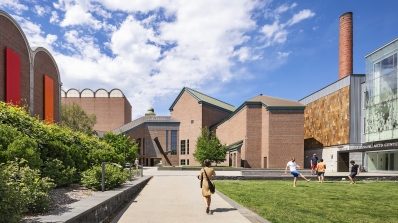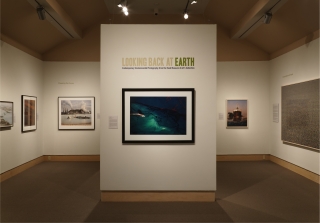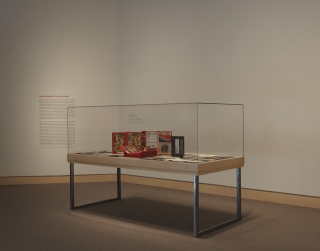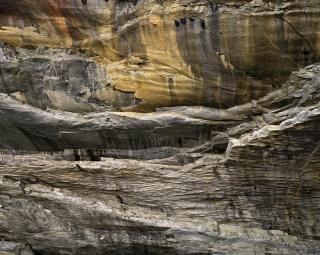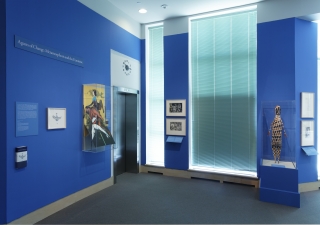Past Exhibitions
Environmental Photography from the Hood Museum of Art
Looking Back at Earth
This exhibition showcases photography that goes beyond landscape to engage with issues of the earth and its environment. It features the work of Subhankar Banerjee, Virginia Beahan, Daniel Beltrá, Diane Burko, J. Henry Fair, Emmet Gowin, Patricia MacDonald, David Maisel, and Ian Teh, among others. Its themes include consumption and waste, industrial pollution, urban sprawl, unsustainable farming, and climate change and its effects on the Arctic.
The Box in a Valise
Marcel Duchamp
Marcel Duchamp described his Boîte-en-valise (Box in a Valise) as a “portable museum” that would allow him to carry around his life’s work in a traveling box. The artist spent five years, between 1935 and 1940, recreating his oeuvre in miniature through photographs, hand-colored reproductions, and diminutive models. These facsimiles of the artist’s major paintings, drawings, and sculpture were then placed in imitation-leather boxes or valises that he would spend the rest of his life assembling. Duchamp’s most significant works are cleverly arranged inside each box like a traveling salesman’s wares; open the lid and you find a treasure trove of art objects all reproduced on a miniature scale. The Hood Museum of Art recently acquired an important example of the Box in a Valise edition. This work, which the artist housed in a red linen-lined box about the size of a large attaché case, will be shown at Dartmouth College for the first time in this installation.
The Expanding Grid
This exhibition explores the important legacy of cubism and other forms of grid-based abstraction for contemporary artistic expression. The structural underpinnings of the pioneering works of art that Pablo Picasso and Georges Braque made in the 1910s allowed them to negate the perspectival illusionism of naturalistic representation. Subsequent artists, such as Josef Albers and Mark Rothko, refined and developed the grid-like scaffolding of cubism to produce an austere and rather impersonal form of abstract art, in which flatness and order were of paramount importance. By the 1960s, however, a new generation of artists, including Chuck Close and Eva Hesse, began to negatively associate the rigid geometry of modernist abstraction with male dominance and political authoritarianism. These artists expanded and, in some cases, exploded the modernist grid to create works of art that embraced political content, figuration, narrative, and subjectivity. As this exhibition shows, contemporary artists continue to explore the temporal and spatial possibilities of grid-based art in works of art that challenge and revitalize the invented language of abstraction.
Edward Burtynsky's Vermont Quarry Photographs in Context
Nature Transformed
Burtynsky’s vivid and iconic photographs of the quarries of Vermont are explored within the context of the geological and social history of the area, including in particular the Italian immigrant stoneworkers in the marble quarries around Rutland and the granite quarries near Barre.
Metamorphosis and the Feminine
Agents of Change
This installation features seven works of art which touch upon moments of feminine metamorphosis. In them, women are agents of change: they cause change and/or are changed themselves. Through these works, the unique relationship between the feminine and transformation becomes clear, and metamorphosis in turn becomes an act that can emancipate women from the confines of their traditional gender roles, to one degree or another.
José Clemente Orozco and Jackson Pollock
Men of Fire
In 1936, Jackson Pollock traveled to Dartmouth College to view José Clemente Orozco's monumental fresco The Epic of American Civilization (1932-34). The deep impact that Orozco's imagery had on the young Pollock is demonstrated in this revelatory exhibition, which brings together for the first time the drawings and paintings of two of the most famous artists of the twentieth century.
